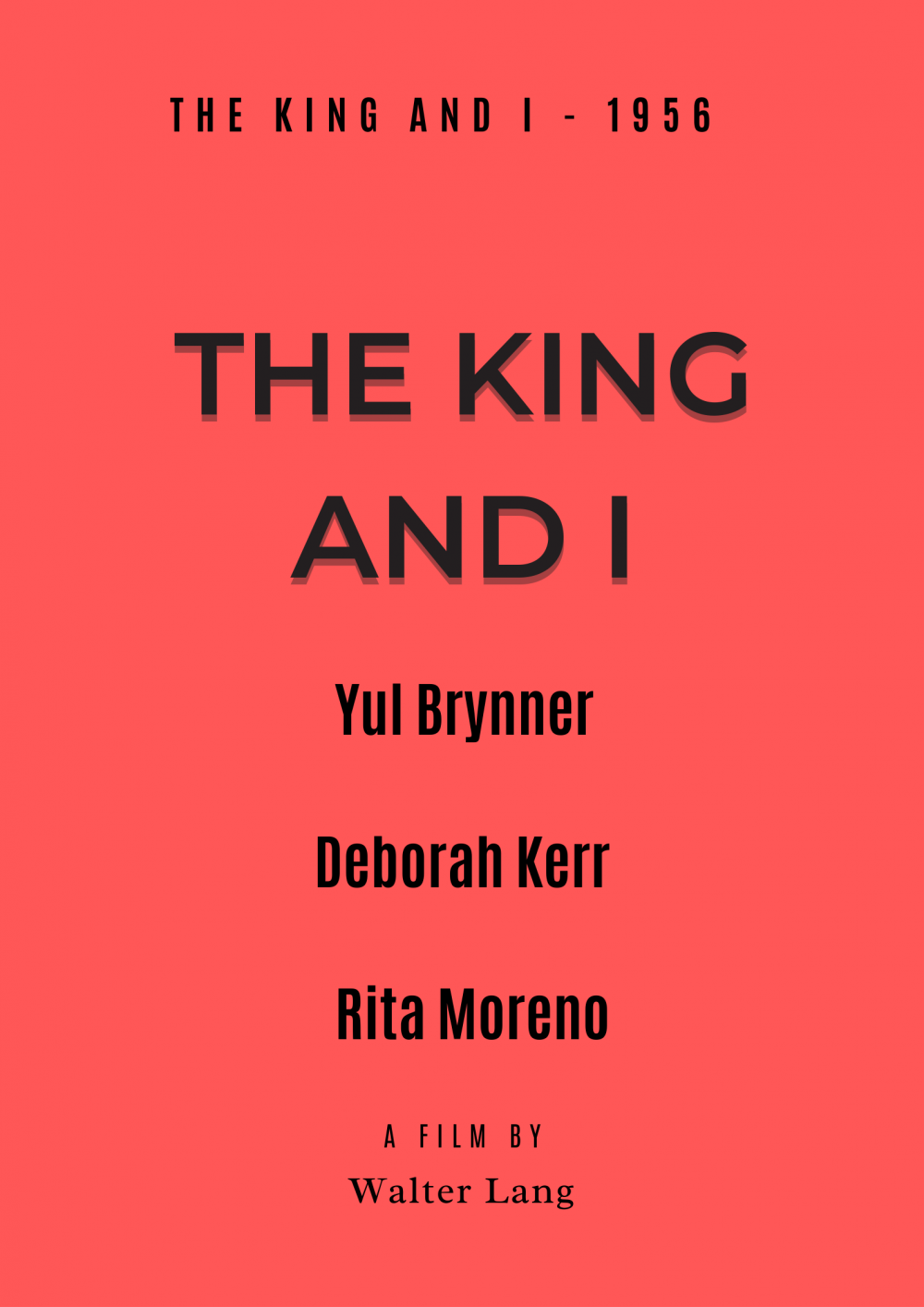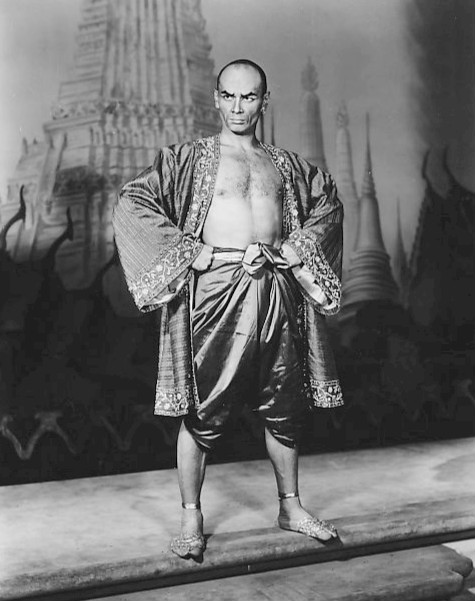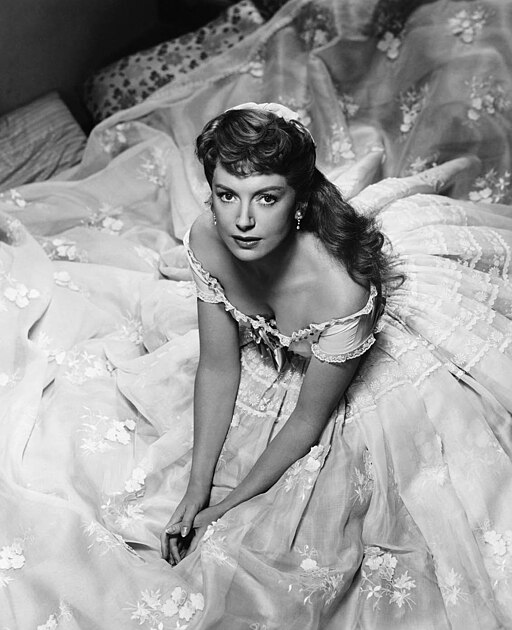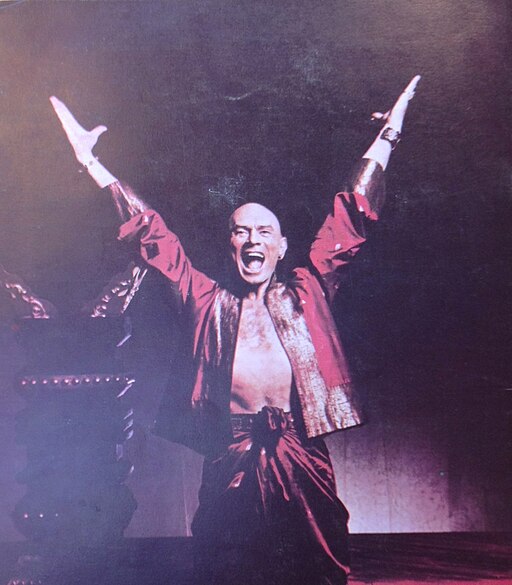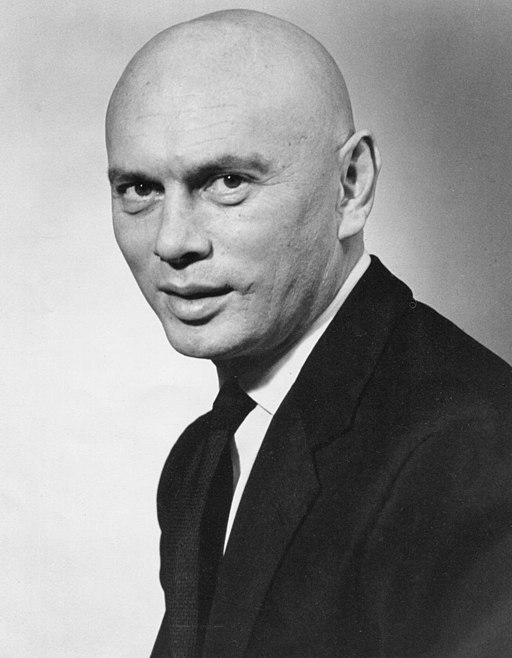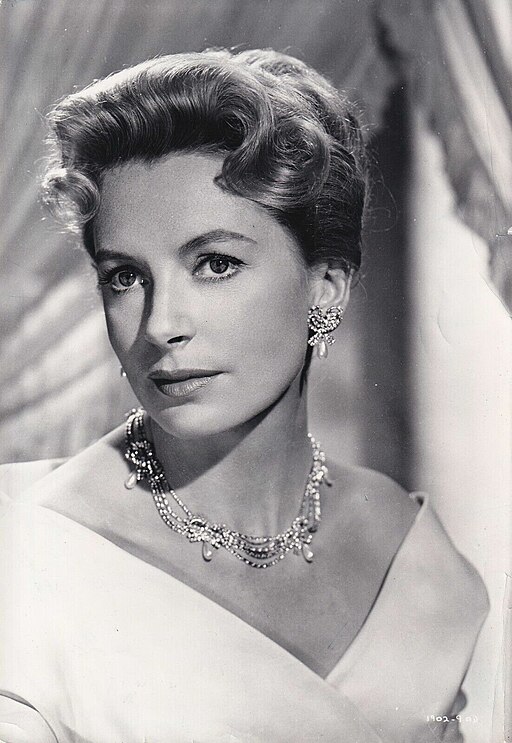The King and I - 1956
back| Released by | 20th Century Fox |
| Director | Walter Lang |
| Producer | Charles Brackett |
| Script | Ernest Lehman based on the novel |
| Cinematography | Leon Shamroy |
| Music by | Richard Rodgers (music), Oscar Hammerstein II (lyrics) |
| Running time | 133 minutes |
| Film budget | $4.55 million |
| Box office sales | $21.3 million (domestic initial release) |
| Main cast | Yul Brynner - Deborah Kerr - Rita Moreno - Martin Benson - Terry Saunders |
The King and I – A cultural clash in a musical spectacle
"The King and I" is a musical film adaptation of the Rodgers and Hammerstein stage musical of the same name. The story is based on the memoirs of Anna Leonowens, who served as a governess to the children of King Mongkut of Siam in the early 1860s.
The film showcases the cultural clash and evolving relationship between the British widow and the King, set against a backdrop of lavish sets, extravagant costumes, and memorable musical numbers. Yul Brynner's performance as the King is particularly celebrated, earning him an Academy Award for Best Actor. The film itself won five Oscars, including Best Art Direction and Best Costume Design, and is regarded as one of the greatest movie musicals of all time.
Related
The King and I – An Analysis
"The King and I," directed by Walter Lang, is a lush, vibrant musical that tells the story of Anna Leonowens, a British governess, who comes to Siam to teach the children of King Mongkut. Set in the 1860s, the film explores themes of cultural clash, love, power, and transformation, all underscored by Rodgers and Hammerstein’s unforgettable score.
Story and Themes
The narrative of "The King and I" centers around the evolving relationship between Anna and the King, as they navigate the delicate balance of power and mutual respect. Anna, portrayed with grace and determination by Deborah Kerr, arrives in Siam with Western ideals and a strong will, challenging the King’s traditional views. Yul Brynner’s King Mongkut is at once commanding and vulnerable, displaying a complexity that won him an Academy Award.
The film addresses the theme of change and modernization, as the King seeks to bring progress to Siam while grappling with the preservation of tradition. The conflict between Eastern and Western values is palpable, yet the movie also highlights the universality of love, respect, and understanding.
Musical and Cinematic Elements
"The King and I" is renowned for its stunning visuals, from the opulent palace sets to the exquisite costumes. Leon Shamroy’s cinematography captures the grandeur and vibrancy of the setting, contributing to the film’s overall spectacle. The musical numbers are integral to the storytelling, with songs like “Getting to Know You” and “Shall We Dance” becoming iconic. The choreography, particularly in the “The Small House of Uncle Thomas” ballet sequence, is intricate and expressive, adding another layer of artistry to the film.
Performances
Deborah Kerr delivers a nuanced performance as Anna, embodying her character’s strength, kindness, and sense of justice. Yul Brynner’s portrayal of King Mongkut is both charismatic and thoughtful, creating an unforgettable screen presence. The supporting cast, including Rita Moreno as Tuptim and Terry Saunders as Lady Thiang, add depth and dimension to the story.
Cultural Impact and Legacy
"The King and I" has left a lasting impact on the musical genre, celebrated for its blend of story, music, and visuals. The film’s portrayal of Siam and its culture, however, has been criticized for its Western perspective and lack of historical accuracy. Despite these criticisms, the movie remains a classic, remembered for its emotional resonance and artistic achievements.
In summary, "The King and I" stands as a testament to the power of musical storytelling, with standout performances, stunning visuals, and a timeless score. It navigates complex themes of culture, power, and change, leaving a legacy as one of the most beloved musicals in film history.
Full cast of the “The King and I”:
- Deborah Kerr as Anna Leonowens
- Yul Brynner as King Mongkut of Siam
- Rita Moreno as Tuptim
- Martin Benson as Kralahome
- Terry Saunders as Lady Thiang
- Rex Thompson as Louis Leonowens
- Carlos Rivas as Lun Tha
- Patrick Adiarte as Prince Chulalongkorn
- Alan Mowbray as Sir John Hay
- Geoffrey Toone as Sir Edward Ramsay
- Leonard Strong as Interpreter
- Robert Banas as Royal Child (uncredited)
- Yuriko as Royal Wife (uncredited)
Analyzing the direction style of Walter Lang in “The King and I”:
Walter Lang's direction of "The King and I" showcases his ability to navigate the complexities of adapting a beloved stage musical to the silver screen while retaining its charm and emotional depth. Lang, known for his expertise in directing musicals and romantic comedies, brought a keen sense of pacing, visual flair, and emotional resonance to the film, helping it become one of the most celebrated musicals of its time.
Visual Style
Lang’s direction shines in his use of Cinemascope, utilizing the widescreen format to create lush, expansive visuals that immerse the audience in the exotic world of 1860s Siam. He made excellent use of the set designs, capturing the opulence and grandeur of the royal palace, which served as a character in its own right. Lang’s framing and composition during the musical numbers are noteworthy, as he seamlessly integrates dance choreography with camera movements, enhancing the film's visual appeal.
Handling of Performances
Lang successfully directed a talented ensemble cast, extracting memorable performances, particularly from Yul Brynner and Deborah Kerr. He managed to capture the complex dynamic between Anna and the King, balancing their moments of conflict with tender scenes that highlighted their growing mutual respect and understanding. Brynner’s charismatic and commanding presence is skillfully counterbalanced by Kerr’s dignified and empathetic portrayal of Anna, creating a compelling on-screen chemistry.
Musical and Emotional Pacing
Lang’s direction ensured that the musical numbers flowed organically within the narrative, driving the story forward while providing emotional depth. He skillfully balanced the light-hearted moments with the film’s more serious themes, such as cultural clash and the quest for knowledge and freedom. The “Shall We Dance?” sequence stands out as a testament to Lang’s ability to combine music, dance, and narrative progression, capturing the pivotal moment in Anna and the King’s relationship.
Cultural Sensitivity
While “The King and I” is celebrated for its musical and visual elements, it has also faced criticism for its portrayal of Eastern culture through a Western lens. Lang, working within the constraints of Hollywood’s norms at the time, directed a film that is undeniably a product of its era, with some aspects that might be viewed as culturally insensitive by contemporary standards. However, his focus on the universal themes of understanding and connection helped transcend some of these limitations, creating a film that resonates with audiences across different cultures and generations.
Legacy
Lang’s directorial vision played a crucial role in the lasting appeal of "The King and I." His ability to blend stunning visuals, strong performances, and emotional storytelling resulted in a film that is not only a feast for the eyes but also touches the heart. Despite some of its dated aspects, Lang’s direction helped create a classic of the musical genre, celebrated for its artistic achievements and its contribution to the golden age of Hollywood musicals.
Accolades for cinematographer Leon Shamroy:
Leon Shamroy, the cinematographer for "The King and I," played a crucial role in shaping the visual aesthetic of the film, contributing significantly to its lasting impact and success. Below is an analysis of his contribution to the film:
Mastery of Technicolor
- Shamroy was renowned for his expertise in Technicolor cinematography, and "The King and I" is a testament to his skill in this area. The film features lush, vibrant colors that help to create a rich and immersive visual experience. The opulent sets, costumes, and lighting all benefitted from Shamroy's ability to manipulate and maximize the potential of color film.
Creating Atmosphere
- Shamroy was adept at using lighting and color to establish mood and atmosphere. In "The King and I," he used these elements to differentiate between the various settings and emotional tones of the film, from the grandeur of the royal palace to the more intimate, personal moments between the characters.
Technical Innovation
- Shamroy was known for his innovative techniques and willingness to experiment with new technology. His work on "The King and I" involved complex setups and meticulous attention to detail to ensure that every frame was visually stunning.
Collaboration with Director and Designers
- A successful film is often the result of strong collaboration, and Shamroy's work on "The King and I" was no exception. He worked closely with director Walter Lang, production designer John DeCuir, and costume designer Irene Sharaff to ensure a cohesive visual style that supported the narrative and themes of the film.
Legacy and Impact
- Leon Shamroy’s cinematography for "The King and I" has been widely praised and is often cited as one of the standout aspects of the film. His ability to harness the power of color cinematography helped to create a film that was not only a visual feast but also an integral part of the storytelling process. His work garnered him an Academy Award nomination and contributed to the film’s overall success at the Oscars.
The role of King Mongkut played by Yul Brynner analyzed:
ul Brynner’s portrayal of King Mongkut of Siam in “The King and I” stands as one of the most iconic performances in film history, earning him an Academy Award for Best Actor. His depiction of the King is complex, charismatic, and deeply memorable, encapsulating the multifaceted nature of a leader caught between tradition and modernity.
Charisma and Command
Brynner’s King is authoritative and commands attention in every scene he is in. His regal bearing, deep voice, and piercing gaze convey the King’s assertiveness and determination to maintain control over his kingdom. Brynner’s stage experience in the same role adds a theatrical flair to his performance, enhancing the King’s larger-than-life presence.
Complexity and Vulnerability
Despite his stern exterior, Brynner brings layers of complexity and vulnerability to the character. He showcases the King’s internal struggle as he grapples with the rapid changes and modernization efforts he wishes to implement in his country. His interactions with Anna reveal a man who is intelligent, curious, and open to learning, providing a nuanced portrayal that goes beyond the archetype of an autocratic ruler.
Chemistry with Deborah Kerr
Brynner’s chemistry with Deborah Kerr, who plays Anna, is palpable and central to the film’s success. The King’s initial resistance to Anna’s teachings and ways slowly transforms into respect and admiration, culminating in the iconic “Shall We Dance?” sequence. Brynner’s performance captures the King’s gradual opening up to Anna’s influence, subtly portraying the emotional transformation he undergoes.
Physicality and Presence
Brynner’s physicality is a standout aspect of his performance. His graceful movements during the dance sequences, combined with his commanding presence, add depth to the character. His portrayal of the King’s mannerisms and speech patterns contribute to the authenticity of the character, making his King Mongkut memorable and believable.
Legacy
Yul Brynner’s role as the King in “The King and I” has left an indelible mark on the history of film. His performance is widely regarded as one of the greatest in musical cinema, showcasing his ability to convey strength, complexity, and vulnerability. Brynner’s portrayal transcends the potential pitfalls of a Western interpretation of an Eastern monarch, providing a character that is both of its time and timeless. The role became so synonymous with Brynner that he went on to reprise it numerous times on stage until his death, solidifying his legacy and the enduring appeal of his portrayal of King Mongkut.
Analysis of Deborah Kerr’s performance as Ann Leonowens:
Deborah Kerr’s portrayal of Anna Leonowens in "The King and I" is widely regarded as one of her most iconic and memorable performances. Her character, a British schoolteacher hired to educate the children of the King of Siam, serves as a central figure around which the themes of cultural clash, modernization, and personal transformation revolve. Here’s an in-depth analysis of her role:
Cultural Ambassador and Educator
Anna represents the values and ideals of the Victorian era, bringing with her a strong sense of duty, education, and moral values. Kerr’s performance captures the determination and resilience of a woman on a mission to educate and influence in a foreign land. Her character serves as a cultural ambassador, introducing Western ideas and education to the royal children, which is a pivotal aspect of the film’s narrative.
Strength and Vulnerability
Kerr imbues Anna with a sense of strength and independence, standing her ground against the King’s autocratic tendencies. Yet, she also brings a layer of vulnerability to the character, showcasing her struggles, doubts, and the emotional turmoil she experiences throughout her journey in Siam. This balance of strength and vulnerability makes Anna a relatable and compelling character.
Evolving Relationship with the King
One of the central aspects of Kerr’s performance is her evolving relationship with the King, played by Yul Brynner. The initial conflict and misunderstanding between them gradually transform into a deep mutual respect and unspoken affection. Kerr's nuanced performance captures this transition beautifully, highlighting the complexity of their relationship and its impact on both characters’ personal growth.
Musical and Dancing Skills
Though Marni Nixon dubbed her singing, Kerr’s acting during the musical sequences adds depth and emotion to the songs. Her performance in the iconic “Shall We Dance?” scene showcases her dancing skills and contributes to the unforgettable chemistry between Anna and the King.
Maternal Instincts
Kerr also brings out the maternal side of Anna, showcasing her genuine care and affection for the King’s children. Her interactions with the young princes and princesses of Siam add a layer of warmth to her character, emphasizing the transformative power of education and personal connections.
Legacy
Deborah Kerr’s performance as Anna Leonowens stands out as one of the highlights of her illustrious career. She received an Academy Award nomination for Best Actress for her role, cementing her status as one of the leading actresses of her time. Her portrayal of Anna has been praised for its emotional depth, strength, and complexity, contributing significantly to the film’s enduring appeal and critical acclaim.
Remarkable quotes from “The King and I”:
King: "When I sit, you sit. When I kneel, you kneel. Et cetera, et cetera, et cetera!"
- This line captures the King’s commanding nature and his expectation of obedience, showcasing the initial cultural clash between him and Anna.
Anna: "Your Majesty, I do not intend to have my head cut off!"
- Anna asserts herself, showing her courage and unwillingness to be intimidated, even by a king.
Anna: "I believe that in this world it is impossible to be good enough at anything. All we can do is try our best."
- This line reflects Anna’s educational philosophy and her belief in the value of striving for improvement.
King: "Is a puzzlement!"
- A recurring line that the King uses to express his confusion and frustration with the modern world and his own conflicting emotions.
Anna: "I have always been curious about everything, and I have always asked questions. But they are most usually answered by myself."
- This quote highlights Anna’s inquisitive nature and her independence, as well as her ability to find answers on her own.
Anna: "The world is not as bad as you think, Your Majesty."
- Anna’s optimistic worldview and her efforts to open the King’s eyes to different perspectives and possibilities.
King: "You make me see things differently. I am glad that you are here."
- The King acknowledges Anna’s influence on him, highlighting the transformation in their relationship and his own personal growth.
Anna: "I don’t think any man has ever been as kind to me as you are. In your own way."
- Anna’s realization of the King’s genuine kindness, despite his autocratic behavior, showcases the complexity of their relationship.
Anna: "I believe that children should be taught to be very brave and very truthful."
- Anna’s educational values are evident in this line, emphasizing the importance of bravery and honesty.
King: "What is it to be done? Nothing to be done."
- The King’s resignation in the face of challenging situations, highlighting his internal struggles.
Awards and Nominations for “The King and I”:
Academy Awards (Oscars)
- Won: Best Actor in a Leading Role - Yul Brynner
- Won: Best Art Direction-Set Decoration, Color - John DeCuir, Lyle R. Wheeler, Paul S. Fox, and Walter M. Scott
- Won: Best Costume Design, Color - Irene Sharaff
- Won: Best Music, Scoring of a Musical Picture - Alfred Newman and Ken Darby
- Won: Best Sound, Recording - Carlton W. Faulkner (20th Century-Fox Sound Department)
- Nominated: Best Actress in a Leading Role - Deborah Kerr
- Nominated: Best Cinematography, Color - Leon Shamroy
- Nominated: Best Director - Walter Lang
- Nominated: Best Music, Original Song - Richard Rodgers (music) and Oscar Hammerstein II (lyrics) for the song "I Whistle a Happy Tune"
- Nominated: Best Picture - Charles Brackett
Golden Globe Awards
- Won: Best Motion Picture – Musical or Comedy
- Won: Best Actor in a Motion Picture – Musical or Comedy - Yul Brynner
- Nominated: Best Actress in a Motion Picture – Musical or Comedy - Deborah Kerr
BAFTA Awards (British Academy Film Awards)
- Nominated: Best Film from any Source
- Nominated: Best Foreign Actress - Deborah Kerr
Other Awards and Nominations
- The film also received various other nominations and recognitions from film festivals and critics' associations.

